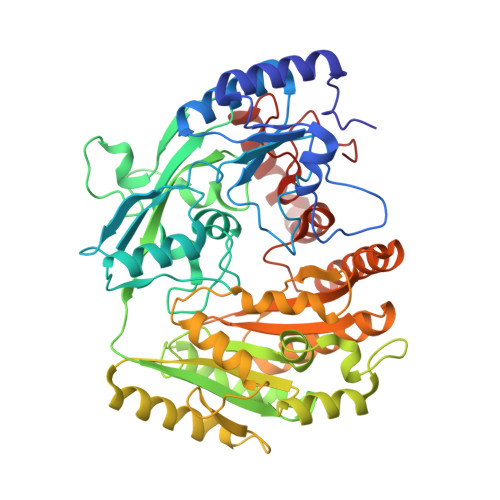Biocatalytic Properties and Structural Analysis of Eugenol Oxidase from Rhodococcus Jostii Rha1: A Versatile Oxidative Biocatalyst.
Nguyen, Q., De Gonzalo, G., Binda, C., Rioz-Martinez, A., Mattevi, A., Fraaije, M.W.(2016) Chembiochem 17: 1359
- PubMed: 27123962
- DOI: https://doi.org/10.1002/cbic.201600148
- Primary Citation of Related Structures:
5FXD, 5FXE, 5FXF, 5FXP - PubMed Abstract:
Eugenol oxidase (EUGO) from Rhodococcus jostii RHA1 had previously been shown to convert only a limited set of phenolic compounds. In this study, we have explored the biocatalytic potential of this flavoprotein oxidase, resulting in a broadened substrate scope and a deeper insight into its structural properties. In addition to the oxidation of vanillyl alcohol and the hydroxylation of eugenol, EUGO can efficiently catalyze the dehydrogenation of various phenolic ketones and the selective oxidation of a racemic secondary alcohol-4-(1-hydroxyethyl)-2-methoxyphenol. EUGO was also found to perform the kinetic resolution of a racemic secondary alcohol. Crystal structures of the enzyme in complexes with isoeugenol, coniferyl alcohol, vanillin, and benzoate have been determined. The catalytic center is a remarkable solvent-inaccessible cavity on the si side of the flavin cofactor. Structural comparison with vanillyl alcohol oxidase from Penicillium simplicissimum highlights a few localized changes that correlate with the selectivity of EUGO for phenolic substrates bearing relatively small p-substituents while tolerating o-methoxy substituents.
Organizational Affiliation:
Molecular Enzymology, Groningen Biomolecular Sciences and, Biotechnology Institute, University of Groningen, Nijenborgh 4, 9747 AG, Groningen, NL.

















